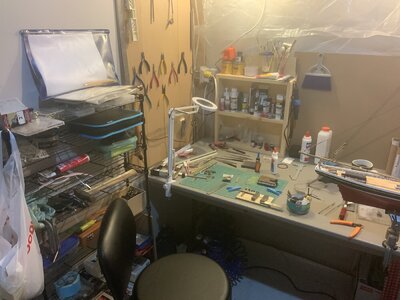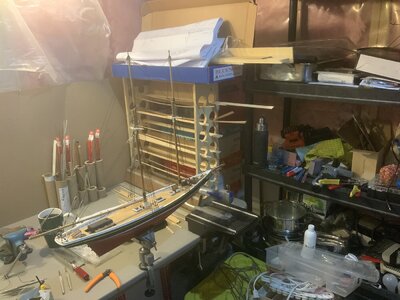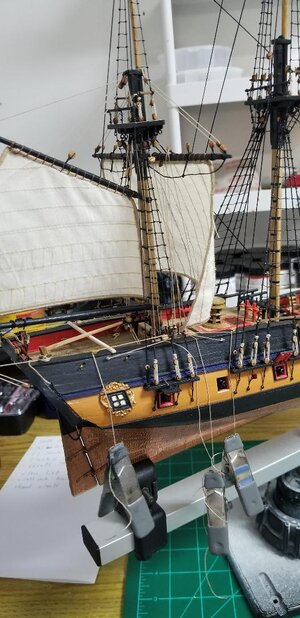Watch this an you'll see what you need to in order to make billowed sails. Olha Batchvarov's technique was used to me the sails for my
La Couronne. Fabric stiffener is cheaper than hair spray and works well. A fan is too weak to stretch sail fabric, only bend it a small bit. It depends on how much you want to deeply deform the sail into a billowed shape. For a 17th century ship, sails were billowed much more than 18th and 19th century sails in general. If I can make billowed sails on my first try, you can too. Prepare to impress yourself.
Click the link below.
Technology of making sails for my models
Also, look at my build log for step-by-step instructions, starting at post #295:
La Couronne Build Log














 John Milton.
John Milton.